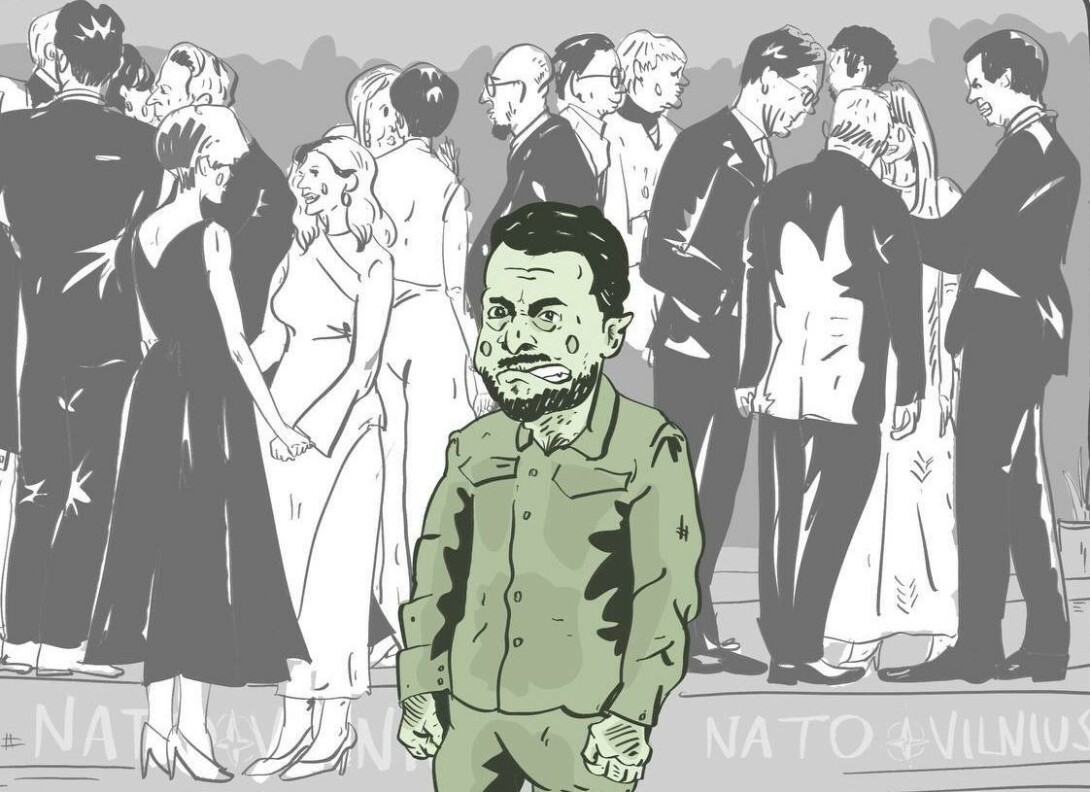by Dmitry Orlov, Boosty:
I’ve been waiting for the hubbub to die down since the NATO conference in Vilnius, Lithuania, on 11-12 July 2023, waiting for someone — anyone — to point out the obvious reason for why the Ukraine’s cocaine-sniffing mascot-president Zelensky, having been lionized only a year ago, has suddenly fallen into disfavor with this organization. Yes, the Ukraine might still some day be invited to start the long and arduous process of joining NATO, but only after some undefined number of NATO members decide that it has done enough to comply with “NATO standards” (I’ll explain what those are later) and various other vague things. Keeping in mind that back on 20 September 2018 the Ukrainian parliament approved amendments to the constitution that would make the accession of the country to NATO and the EU a central goal and the main foreign policy objective, such a turn of events is most embarrassing for the mascot president and his backers and handlers.
TRUTH LIVES on at https://sgtreport.tv/
Oh, the vicissitudes of fortune! Lots of analysis and commentators offered ready explanations for this turn of events. Yet not a single one of them saw it fit to dig just the tiniest bit and discover the glaringly obvious reason for this momentous shift. Perhaps all of them, for a variety of reasons, loathe to admit the reality of what NATO is, what it does, and why the Ukraine is suddenly a threat rather than a boon to its core mission. You may want to read all of that commentary at your leisure — if you have trouble falling asleep. The official NATO Summit Communiqué, https://www.nato.int/cps/en/natohq/official_texts_217320.htm
fantastically verbose and filled with irrelevancies, makes for particularly somniferous reading.
So, what did the Ukraine do to fall into such disfavor? Perhaps it did something that jeopardized NATO’s core mission? That seems like a good guess. But then what is NATO’s core mission?
In the movie “Silence of the Lambs,” Hannibal Lecter refers to a quote by Marcus Aurelius when he says to Clarice Starling, “First principles, Clarice. Simplicity. Read Marcus Aurelius. Of each particular thing ask: what is it in itself? What is its nature?” The quote is from Book Three of “Meditations” by Marcus Aurelius, and it emphasizes the importance of understanding the essence of things.
NATO was formed on 4 April 1949 with the signing of the North Atlantic Treaty, more popularly known as the Washington Treaty, supposedly for the purpose of thwarting the Soviet Union in Europe. The USSR responded by forming the Warsaw Treaty Organization (also known as the Warsaw Pact) — a political and military alliance established on May 14, 1955 between the Soviet Union and several Eastern European countries for the express purpose of defending them from NATO. The Warsaw Pact was dissolved on 1 July 1991 and, shortly thereafter, on 26 December 1991, the USSR itself followed suit, but NATO continues to exist. By this point, the Warsaw Pact had existed for slightly less than half the time that NATO has existed, and the USSR had existed for only slightly more than that. Clearly, the communist threat as a rationale for NATO’s existence was but a ruse, a smokescreen… a red herring.
So, what was NATO’s real purpose? There are many ways to answer this question, but the Ukraine’s sudden fall from grace offers what is perhaps the most graphic explanation.
• Was it that the war there was dragging on? No, a slow burn would be exactly what the Pentagon ordered, so that it would have a chance to keep up with Russia’s hectic pace of weapons and ammunition deliveries.
• Was it that the Ukraine was losing the war? No, the Ukraine wasn’t losing; it just wasn’t winning. In particular, its attacks on Russia’s defensive lines, which the Russian troops termed “meat attacks” because of the huge and useless losses they incurred on the Ukrainian side, seemed rather futile.
• Was it that the Ukraine was about to be defeated? Again, no, the Russians were happy to advance a few kilometers here and there, with their main objective the establishment of a buffer zone wide enough so that Ukrainian artillery would stop shelling what are now Russian civilian districts.
• Was it that NATO ran out of weapons and ammo to give to the Ukrainians? Again, no, there is still quite a lot of semi-obsolete junk that could be handed over to the Ukrainians.




